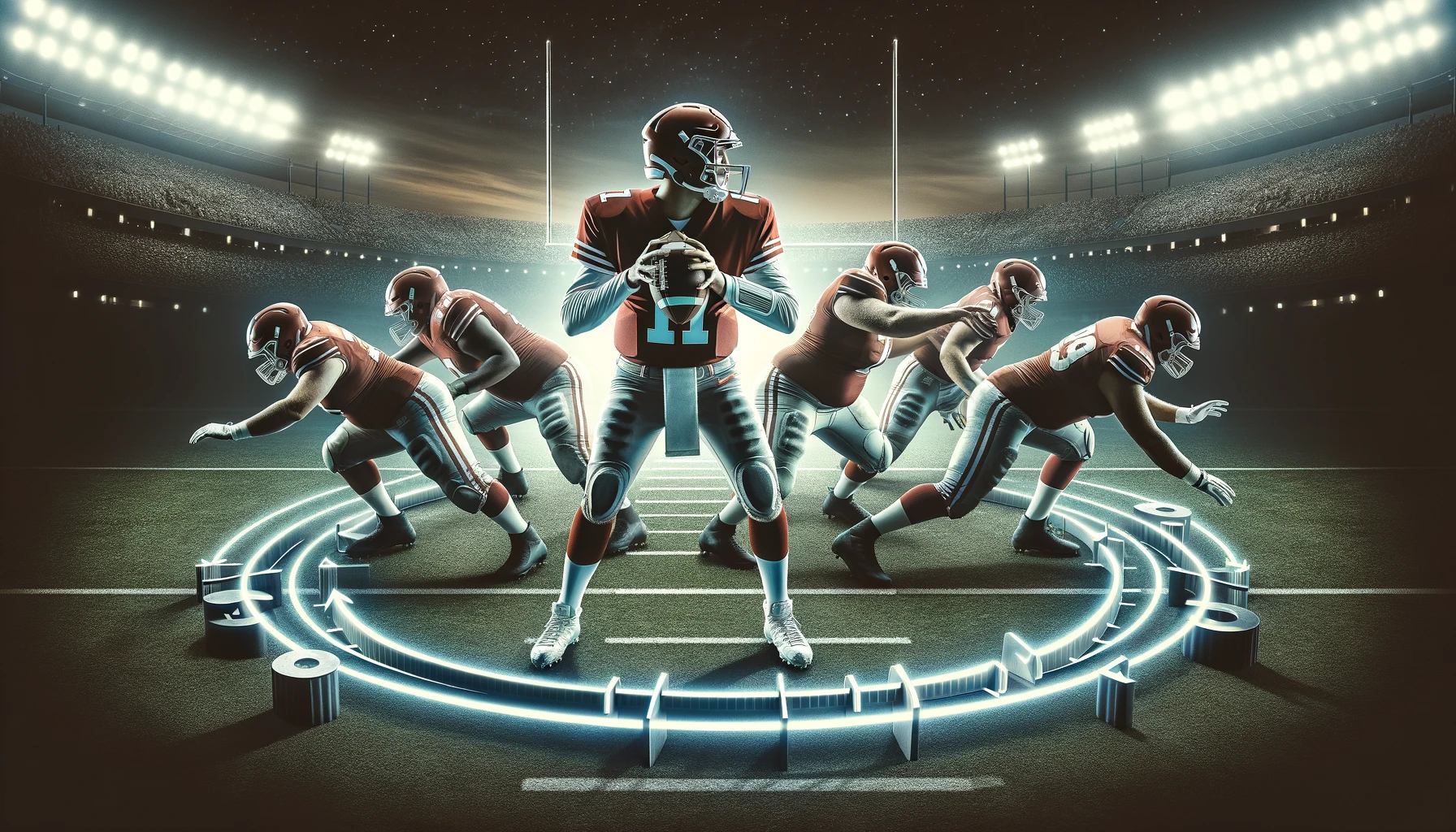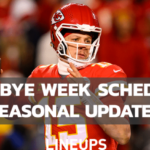The concept of “pocket in football” is a critical part of the game that plays a huge role in the strategy and how plays are carried out. This article will cover what is the pocket in football is, how it’s formed, and why it’s so important for keeping the quarterback safe and making sure passing plays go smoothly.
Whether you’re someone who loves football or you’re just getting started with understanding the game, this look into the pocket will help you see the game in a new light, showing you just how much thought and skill goes into protecting the quarterback.
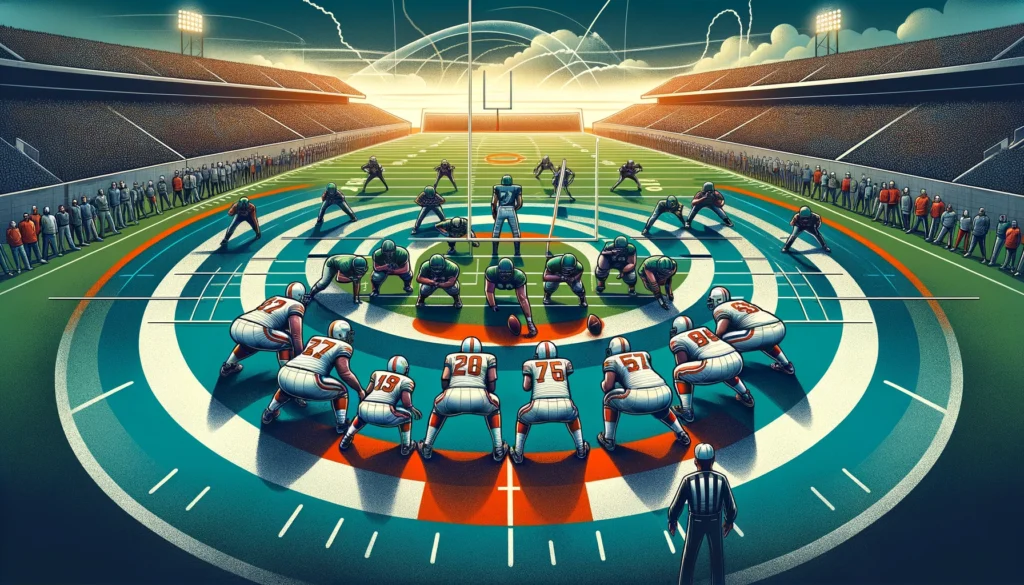
What is the Pocket in Football?
The pocket in football is like a safe zone created around the quarterback. This area is made by the offensive line, who stand firm to stop the defensive players from getting to the quarterback.
The main goal here is to give the quarterback enough time and room to look around and find an open teammate to pass the ball to.
The pocket is super important because it acts as the quarterback’s main shield against being tackled and potentially losing the ball.
Think of it as the quarterback’s personal space where they can focus on making a good play without immediate worry of being hit.
Read More: What Is A Reception In Football?
The Formation and Structure of a Football Pocket
Talking about how the pocket is made, we’re looking at the offensive linemen and their setup around the quarterback right after the ball gets into play. They form a kind of half-circle or arc, which is meant to keep the defensive team out.
This setup can change with different plays, but the big idea is always to create a safe spot for the quarterback to work from. Imagine it like building a fort with your friends to protect something valuable inside; that’s what the offensive line does for the quarterback.
Quarterback Protection: The Role of the Offensive Line
The offensive line has one of the hardest tasks in the game: keeping the quarterback safe. These guys mix strength, smart planning, and working together to block the defense.
It’s not just about size or power it’s about understanding where danger might come from and joining forces to block those threats. It’s like a team of bodyguards, each knowing their role and working in sync to protect someone important.
What Does “Outside the Pocket” Mean in Football?
When a quarterback steps out of the pocket, they’re leaving that protective zone made by their offensive line. Different rules kick in once this happens, especially about what the quarterback can do with the ball.
Moving outside the pocket brings risks, but it also opens new chances for the quarterback to either run with the ball or spot a teammate who’s free to receive a pass. It’s a bit like stepping out of your comfort zone to find new opportunities, even if it means facing more risks.
Navigating the Tackle Box : Rules and Strategies
The “tackle box” is a defined area close to where the game starts, stretching from one end to the other across the line of scrimmage. Quarterbacks have to be mindful of this space because certain penalties, like intentional grounding, are only a concern if they’re within this zone.
Knowing these details helps quarterbacks make better choices when they’re under pressure. It’s a bit like knowing the rules of the road when driving; understanding the boundaries can help you navigate safely and efficiently.
Intentional Grounding and the Pocket
Intentional grounding happens when the quarterback throws the ball away with no chance of it being caught, and they’re still inside the tackle box.
This rule is there to prevent quarterbacks from simply throwing the ball away to avoid being tackled and losing yardage. It forces them to think on their feet and find another solution, making the game more challenging and interesting.
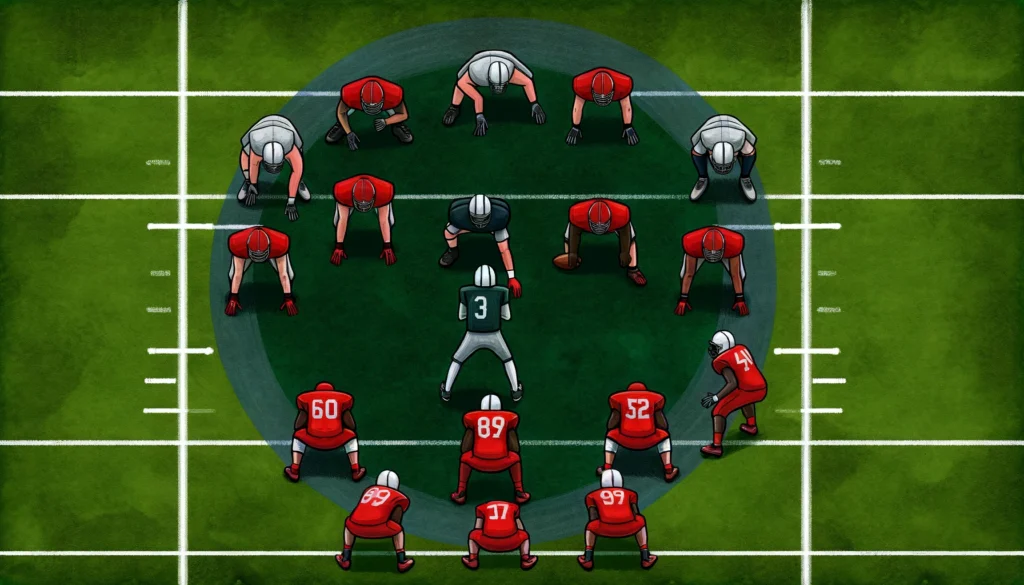
The Evolution of Pocket Presence Among NFL Quarterbacks
Over time, the skills of NFL quarterbacks have grown, especially in how they handle being in the pocket. Pocket presence is all about the quarterback’s ability to sense pressure, stay calm, and decide whether to stay put or move out and make a play.
The best quarterbacks know exactly when to hold their ground and when it’s time to take off and avoid danger. It’s like having a sixth sense for danger and knowing the best way to react in any situation.
Pocket Dynamics in College Football vs NFL
How the pocket is used and seen can differ a lot between college football and the NFL. The level of skill, speed of the game, and rules all play a part in these differences.
This section will dive into what those differences mean for players moving from college to the professional level. It’s a bit like moving up from playing in the schoolyard to competing in a more structured and challenging environment.
Defensive Strategies to Collapse the Pocket
Defensive teams are always on the lookout for ways to break past the offensive line and tackle the quarterback. They use strategies like blitzes (rushing extra players) and stunts (players crossing paths to confuse the offense) to try and break through.
Knowing how these tactics work is key for both the defense aiming to disrupt the play and the offense trying to keep their quarterback safe. It’s a constant game of cat and mouse, with each side trying to outsmart the other.
Developing Pocket Awareness: Tips for Quarterbacks
For quarterbacks wanting to get better, working on pocket awareness is crucial. This means practicing how to move, reading the defense quickly, and getting a feel for when the pocket is about to collapse.
Constant practice in these areas helps quarterbacks stay ahead of the defense and make smart plays. It’s about being aware of your surroundings and ready to act fast, keeping you and your team in the best position to succeed.
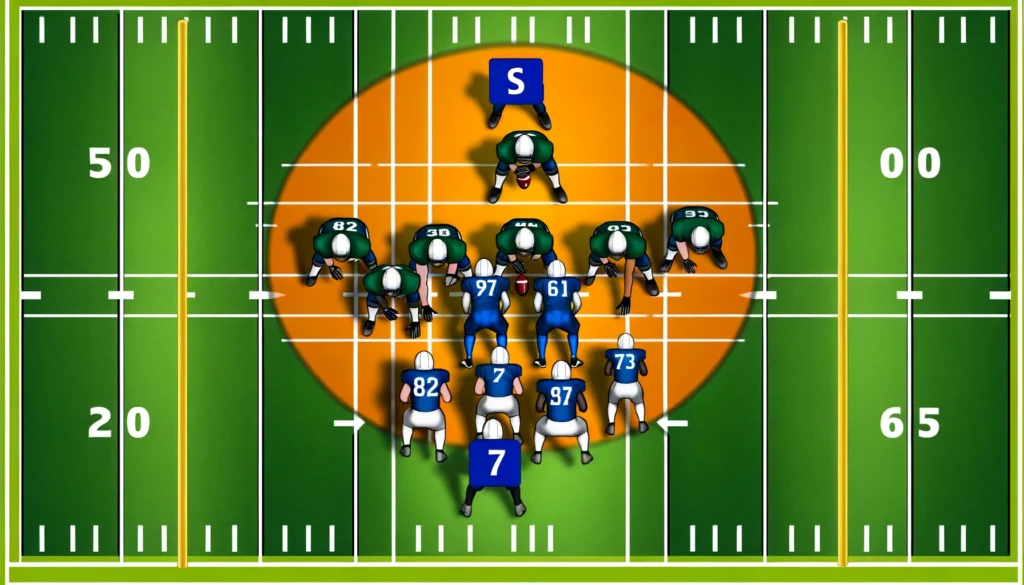
Key Takeaways
- The pocket is a protected area around the quarterback, crucial for successful passing plays.
- The offensive line plays a key role in forming and maintaining the pocket.
- Understanding the rules and strategies related to the pocket, like the tackle box and intentional grounding, can make a big difference in a quarterback’s effectiveness.
- The concept of pocket presence has evolved, and it remains a vital skill for quarterbacks at all levels of play.
- Defenses are always looking for ways to collapse the pocket, making awareness and quick decision-making essential for quarterbacks.
Conclusion
Understanding the football pocket is crucial for any player or fan keen on grasping the game’s intricacies. The receiver’s role becomes pivotal once the quarterback, acting as the passer, finds them beyond the defenders’ reach. Meanwhile, the offensive line’s ability to fend off defenders and prevent a sack is fundamental.
Quarterbacks often drop back into the pocket, using their awareness and agility to avoid a sack, keeping their eyes downfield for an open receiver. This dance between the passer and receiver, with defenders bound to disrupt their connection, highlights the dynamic and strategic nature of football, where every play can turn the tide of the game.
FAQs
- How does a “clean pocket” influence a quarterback’s performance?
- A clean pocket means the area around the quarterback is free from defenders, thanks to the offensive line blocking the rushers. This setup gives the quarterback more time to find a receiver and make an accurate throw. With a clean pocket, the quarterback can focus on the play without worrying about immediate threats, leading to better decision-making and more successful plays.
- What is the role of a “pocket player” in football, and how do they contribute to the team’s offense?
- A pocket player, typically the quarterback, plays a crucial role by making decisions from within the pocket. Their job is to analyze the defense, find open receivers, and decide whether to pass the ball or attempt to run. Good pocket players have the ability to read the game quickly, avoid defenders, and use the space their team creates to launch effective attacks towards the end zone.
- Can a quarterback still avoid a sack if the pocket around them has collapsed?
- Yes, a quarterback can avoid a sack even if the pocket collapses by quickly reacting to the pressure. This might involve stepping up in the pocket, rolling out to extend the play, or using their agility to evade rushers. The key is for the quarterback to remain aware of their surroundings and use their skills to keep the play alive, possibly by finding an open receiver or running with the ball to gain yardage.

Mark Wilson is a sports writer who loves to share stories about different sports like baseball and soccer. He grew up in Chicago, USA, and always enjoyed watching and playing sports.

